The Arctic Cooling Liquid Freezer II 240 & 420 AIO Coolers Review: Big and Effective
by E. Fylladitakis on January 15, 2021 8:15 AM EST- Posted in
- Cases/Cooling/PSUs
- Corsair
- Water Cooling
- Liquid Cooling
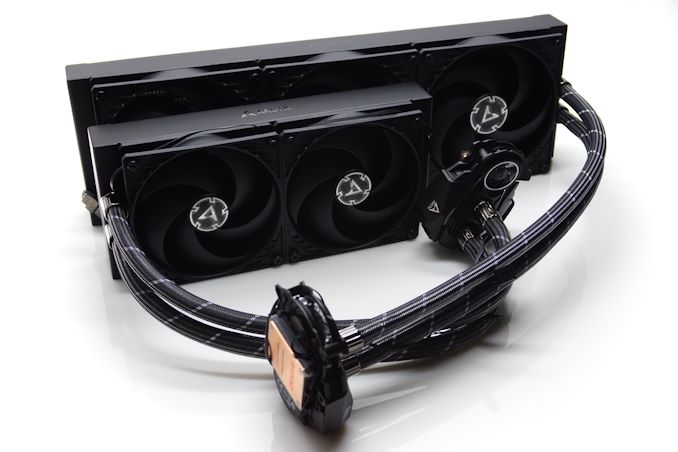
Arctic Cooling is a company originating from Switzerland and has risen to prominence for their advanced cooling solutions. The company was founded back in 2001 and offered some of the best thermal compounds available at the time. Today, cooling products remain the core focus of the company, but they also offer a few other products as well, such as advanced monitor mounts and audio peripherals.
Over the past several months, Arctic Cooling has been picking up from a dry spell in top-tier CPU coolers, having gone a few years since their previous release. Last year, the company introduced the first parts in their their Liquid Freezer II all-in-one liquid cooling series, expanding the range as the months went by. A few weeks ago the company announced the release of the massive Liquid Freezer II 420, triple-fan AIO cooler that holds not three 120mm fans – as is usually the case with triple-fan coolers – but three even larger 140 mm fans. Arctic Cooling set out to cover the market from bottom to top with their Liquid Freezer II coolers, and the introduction of a 420mm design has certainly cemented that status.
In this review, we are taking a look at a couple of Arctic Cooling’s Liquid Freezer II coolers. We're of course diving into the behemoth 420 AIO cooler, but also the much more sensible 240mm version of the cooler. How well does such a large cooler perform with regards to thermals and noise? And just how much better does that make the super-sized cooler over the more normal, widely compatible version of the same cooler? Let's find out.
Packaging & Bundle
Arctic Cooling supplies the Liquid Freezer II series in relatively simple but sturdy recyclable cardboard boxes. The artwork on the box is based on a schematic of the cooler itself, with plenty of information regarding the cooler on the backside of the box. Inside the box, we found the coolers and their parts well protected by cardboard inserts and nylon bags.
The bundle supplied with the Liquid Freezer II coolers is the same regardless of the cooler’s size. Unfortunately, the MX-4 thermal compound that the company advertises to be included is a single dose, not a whole tube. The rest of the bundle consists of the necessary mounting hardware, all in black color. There is no paper manual but there is a card with a QR code, which in turn leads to an downloadable manual.
The Arctic Cooling Freezer II 240 / 420 Coolers
As expected, the main difference between the 240 and 420 versions of the Freezer II is the size of their radiators and fans. Other than that, the two all-in-one (AIO) liquid coolers are identical, using the same main block and tubing. The core design of the coolers is the typical AIO configuration of a single radiator, two hoses, and a block that combines the CPU contact plate and a miniature liquid pump. One major divergence compared to competitive products is that the fans are already installed onto the radiators and everything is pre-wired, with the whole assembly powered by a single 4-pin connector coming out of the block. And while pre-assembly isn't strictly necessary for an AIO cooler, anyone who has assembled a cooler can probably appreciate the time saved by not having to line up screws, power cable orientations, etc. Furthermore, recognizing that some users may want to reconfigure and reassemble the cooler anyhow, the company’s designers added regular fan connectors onto the radiator, meaning that one can seamlessly replace the fans if needed.
Arctic Cooling is using high-density rubber for minimal long-term evaporation that should last for the lifetime of the cooler, with no filling/service ports to be found. The hoses are protected by a nylon sleeve with a circular dual silver thread design. The nylon sleeve also hides the cable that powers the fans. Chromed metal press fittings are used to secure the tubing on both ends.
The radiators of the Arctic Cooling Freezer II AIO coolers are dual-pass cross-flow designs with tiny fins soldered on thin oblong tubes, yet they are not based on the same exact design that most AIO coolers use. Regardless of variant, all of Arctic Cooling’s Freezer II radiators are rectangular constructs that are significantly thicker than standard designs, measuring 38 mm thick without the fans and nearly 65 mm with the stock fans attached. The 420 version of the Freezer II also sports the largest radiator we have seen used by an AIO cooler to this date and comes with three 140 mm fans installed. It is not the longest, as there were a few 4×120mm (480) radiators circulating the market over the past few years but, even compared to these, it has significantly more heat exchange area. Consequently, case compatibility may be a challenge for this behemoth.
The main block assembly of the Freezer II is short and relatively simple, with one major difference discerning it from most competitive products – there is a small 40 mm fan attached to it. This fan has practically nothing to do with the cooling of the CPU itself but is meant to provide some airflow to the motherboard’s power circuitry that would normally be cooled by the air cooler’s airflow. Other than that, the assembly includes the copper contact plate and the mini pump.
The square copper contact plate is not machined down to a complete mirror finish but is very smooth. It is large enough for most commercial processors but will not cover a ThreadRipper processor, for which the Freezer II coolers have no stock support for out of the box.


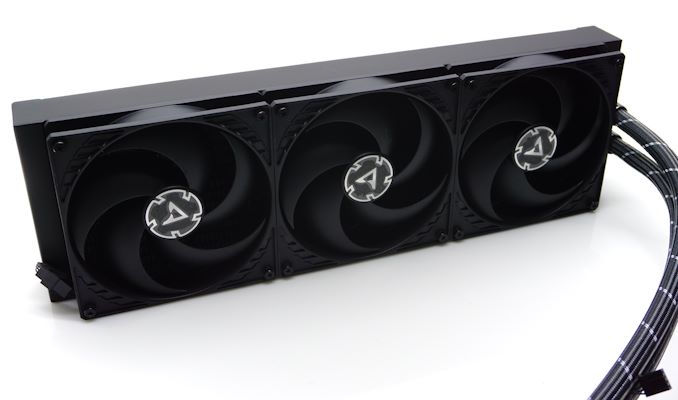
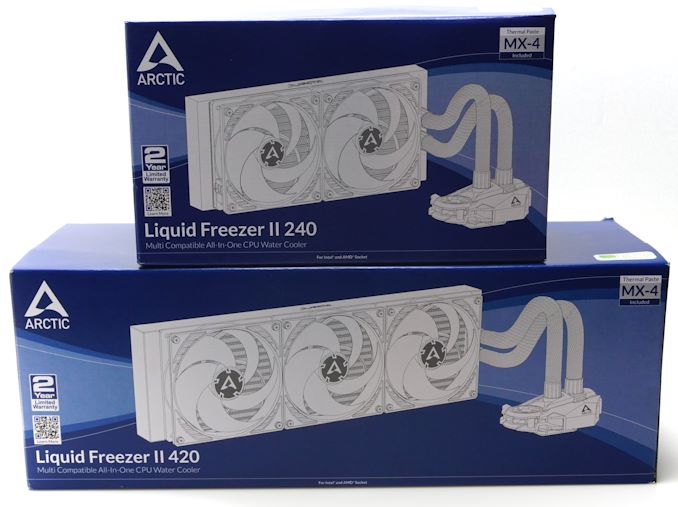
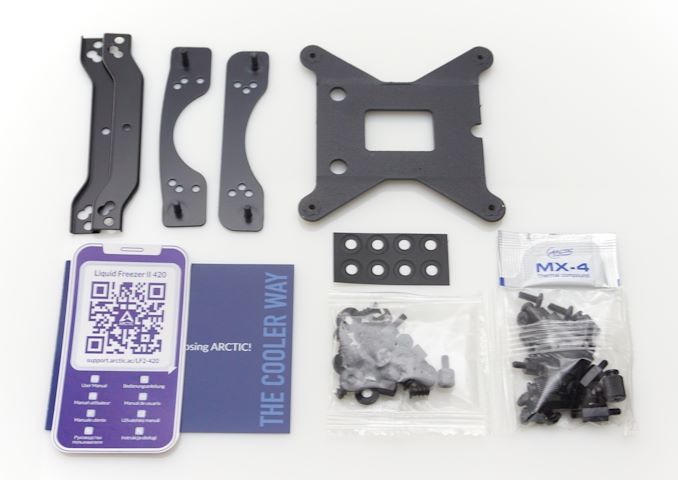
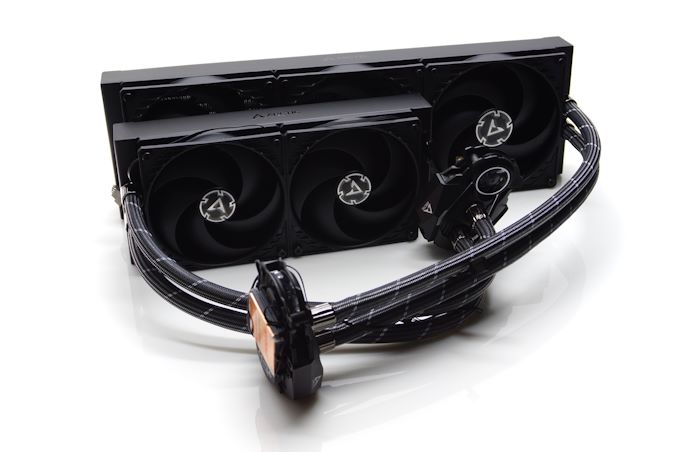
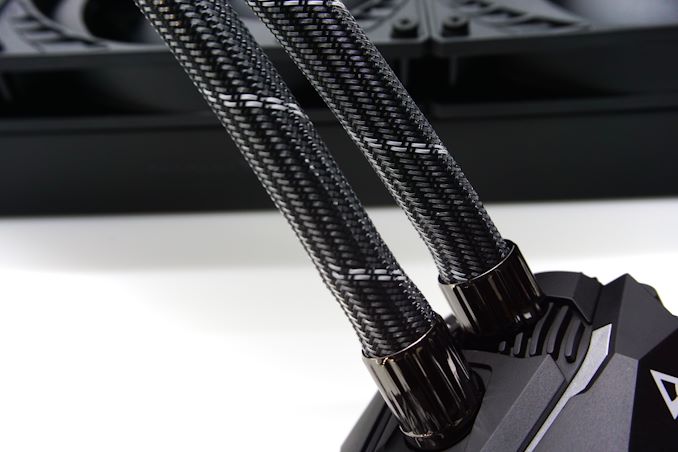
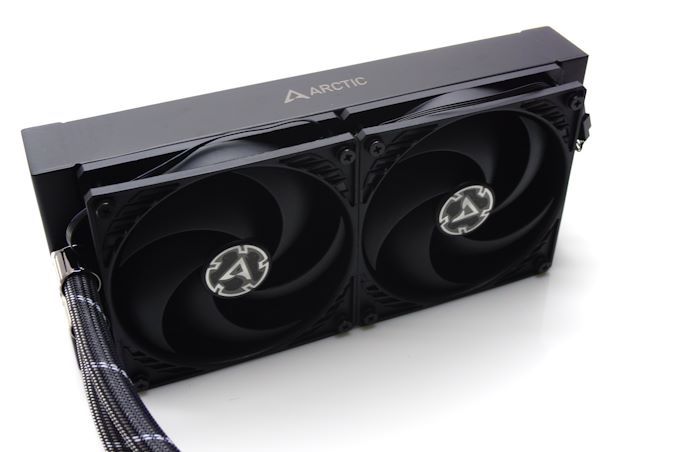

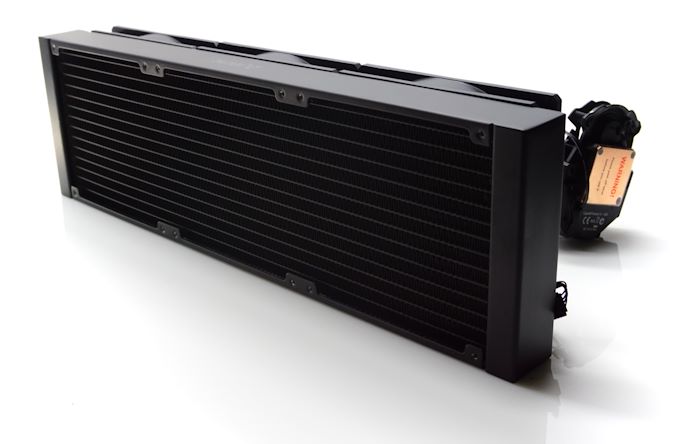
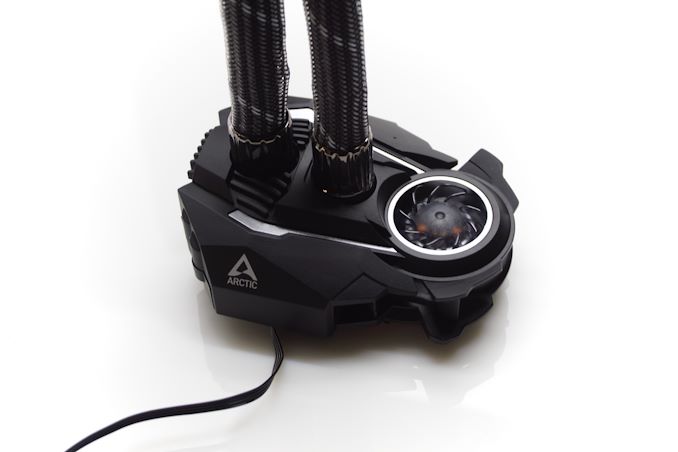









44 Comments
View All Comments
whatthe123 - Friday, January 15, 2021 - link
It's really more about the pump than the thickness. Other non-asetek pump solutions like the new lian li and EK perform basically the same as the liquid freezer 2. you'd need a really large die and a lot of power pulled through it before the rad became the real differentiating factor.Tunnah - Friday, January 15, 2021 - link
What would be an interesting test is to see the temperatures with the fans running minimum speeds. I prefer quiet over temps so my 3700X/NH-D14 with 2 fans run at 300RPM-600RPM to keep it around 60c, and only spin up if it goes up to 80c. Been thinking about getting a beefier cooler so I can keep it cooler at the same sort of fan speeds.lorribot - Friday, January 15, 2021 - link
Whilst maximum cooling potential is useful for those that can configure the system in a certain way (hide in a cupboard) it is not practical for most people, what would really good is temps and fan speed at a given noise level, such as 30db, 32db and 35db, then, given your personal preference/tolerance you would then buy based on performance at your prefered sound threshold and set fans to an appropriate speed. Using 7 volts an 12 volts is pretty pointless.I have never seen this sort of testing in any review.
Galcobar - Saturday, January 16, 2021 - link
Gamers Nexus includes noise-normalized testing in its cooler and case reviews, and has covered most of the Liquid II line. Artic is at or near the top of the GN cheers for thermal/noise efficiency, despite the relatively lower MSRP. The fans of course play a large role in this, which is in line with their near-Noctua results in Optimum Tech's fan roundup.bug77 - Friday, January 15, 2021 - link
I've always built my own system, but never understood the appeal of these. They're not quieter than air cooling and they come with a bunch of problems on their own.Spunjji - Monday, January 18, 2021 - link
They can be quieter than air cooling if you're doing some serious overclocking, not to mention you then avoid having the 1Kg+ of weight you'd need hanging off your motherboard to get similar cooling potential with air alone. It can also allow you to remove the heat directly from the case with the right case design (venting from the top).I'd agree that it's overkill for the majority of users, though. The last time I used AIO coolers were with adaptors for GPUs, which made way more sense - I could get a combined cooling and noise level combination that was simply impossible with air cooling, but cheaper than a custom loop.
Solidstate89 - Monday, January 18, 2021 - link
I don't know why you'd make such a blatantly false statement but these AIO coolers are almost always quieter than an air cooler.Dug - Monday, January 18, 2021 - link
That is not true if you look at any normalized sound testing. In almost all cases a good air cooler will be quieter because you don't have pump noise, and you have less restricted air flow. Noise is going to come from two things, fans and pump. While pump noise may not be loud, it can be annoying. Like a mosquito isn't loud, but killing it makes all the difference in the world.cellarnoise - Friday, January 15, 2021 - link
1st post on a product review since 1997 ish? I can't remember my original user name or password, but keep coming back here a long time. I'm preparing for a 5950x if I can ever find one, so I bought this 420. Love it. Running in a slightly modified Fractal s2 case that I modified to move the 420 closer to the glass side of case away from the motherboard so my mid-height RAM could fit without touching the AIO. Love it! Running on 1700x at 3.8 BOINC load 24/7 it is much quieter as fans sit under 500 rpm for 130w load. At anything but idle this runs much quieter than the single tower Noctua NH-U14s that I had on this before and I have another equivalent on an 1950x sitting in a solid sided Fractal R5. I love the silence and hope it does well on the 5950x at 250W or so.Dorkaman - Saturday, January 16, 2021 - link
Hi are the radiator copper or aluminum? Custom looos are usually copper and have considerably better heat sink.